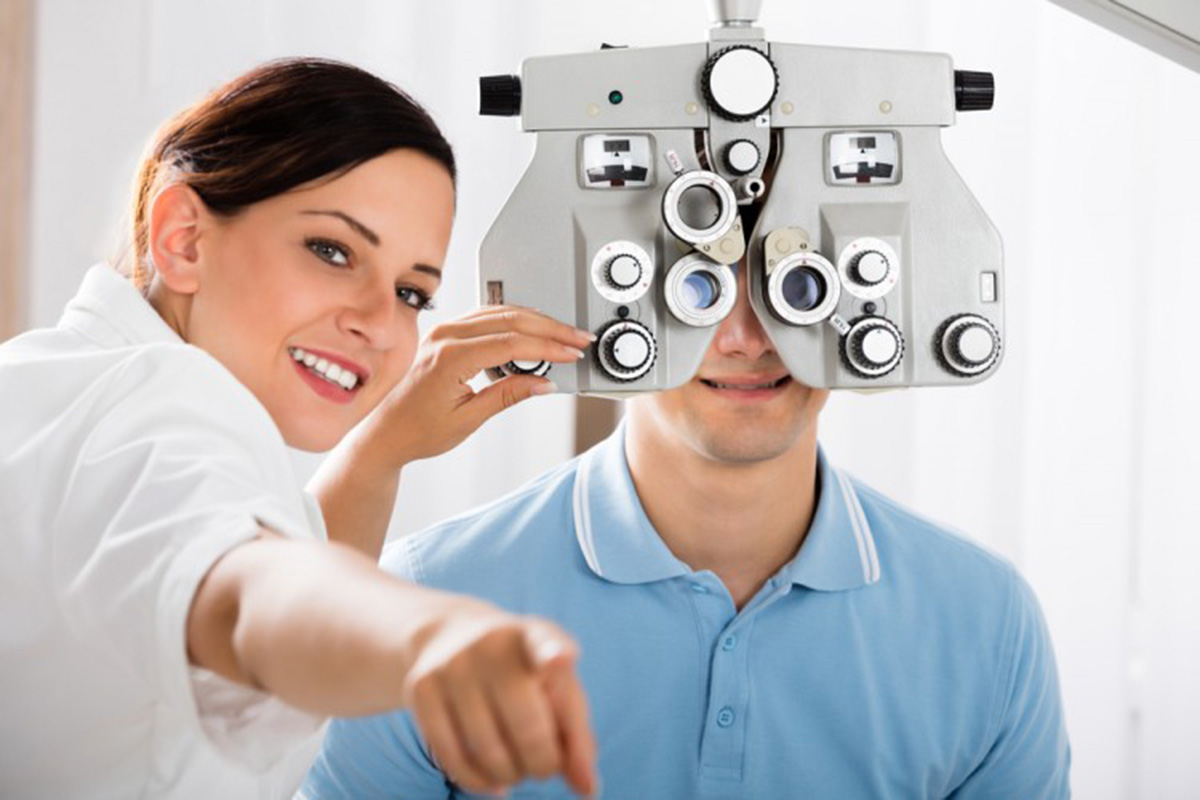Dr Sanjay Sachdeva & Dr Abhishek Sachdeva
Glaucoma is the name given to a group of eye diseases that lead to damage of the optic nerve (the bundle of nerve fibers that carries information from the eye to the brain), which can then lead to vision loss and possibly blindness.
Optic nerve damage usually occurs in the presence of high eye pressure. The glaucoma problem has been discussed in question and answer from as :
What is considered normal eye pressure?
Unfortunately, there is no single number or percentage to be considered as normal eye pressure. On average, your eye pressure should be around 12-22 mg hg, but this may vary for different individuals.
There have been cases of patients having low eye pressure than 22 and still experience worsening of symptoms.
What Are Different Forms of Glaucoma?
There are two main forms of glaucoma: open-angle (the most common form, affecting approximately 70-90% of individuals); and angle-closure.
There are also several other forms of glaucoma, including normal-tension, congenital, juvenile, and secondary.
How can I tell if I have Glaucoma?
Glaucoma is infamous as ‘The Silent thief” because it steals your eyesight without any visible or loud warnings. Symptoms may not show until it is already too late. Whatever signs or symptoms you get, may vary with the type of Glaucoma.
If you have Primary open-angle Glaucoma, your first symptom might be your vision loss – which is a sign of damaged optic nerve.
If you have Acute-angle closure Glaucoma, you may have blurry vision. You might also see rings or halos around lights. You may experience pain or strain in your eye and they may also get red.
What are the tests for Glaucoma?
Common tests used to diagnose Glaucoma are as follows:
Ophthalmoscopy
Perimetry
Gonioscopy
Pachymetry
Tonometry
Q. If my parent has glaucoma, will I get it?
Not necessarily, but it does increase your risk. Other factors that may increase your risk are:
Being over age 50
Being over age 40 and African-American
Having a family history of glaucoma
Having a history of serious eye injury
Taking steroid medications
Having diabetes
Being nearsighted
Having high blood pressure
People with these risk factors should have their eyes examined on a regular basis to look for the disease.
Q Is glaucoma preventable?
A Yes, damage due to glaucoma is preventable, not curable. Whatever damage that is already there cannot be restored, however further damage can be arrested or at least slowed down by appropriate treatment. It is a life-long treatment and needs regular followup.
Q Can I get back my side vision after treatment?
A Unfortunately the vision loss caused by glaucoma is permanent and cannot be regained.
Q What precaution must one take?
One must remember that glaucoma treatment is life long, and one should use the medicines regularly and should come for follow-up as and when advised.
Persons who are at the risk of developing glaucoma (as listed previously) should undergo regular eye examinations.
Diabetics should ensure good control of blood sugar levels
Avoid smoking
Avoid drinking 2-3 glasses of water at a time.
Treatment
Treatments vary depending on the type of glaucoma. The most common include:
Open-angle Glaucoma
Treatment normally begins with medications, usually eye drops or, rarely, pills that either help eye fluid drain more effectively or cause the eye to produce less fluid. Several forms of laser surgery can also help fluid drain from the eye. Conventional filtration surgeries such as the glaucoma drainage implant are sometimes used to create a new opening for fluid drainage.
Acute Angle-closure Glaucoma
(A medical emergency) is treated with medications and/or laser procedures.
Chronic Angle-closure Glaucoma
Chronic angle-closure glaucoma is treated with a laser procedure
Normal-tension Glaucoma
Normal-tension glaucoma is currently treated in the same ways as open-angle glaucoma
Congenital Glaucoma
Congential glaucoma is usually treated with medications and one of two forms of eye surgery.
Secondary Glaucoma
Secondary glaucoma can be open-angle or angle-closure, and acute or chronic. Treatment depends on these factors and whether the underlying condition causing increased eye pressure needs to be addressed.
Trending Now
E-Paper


